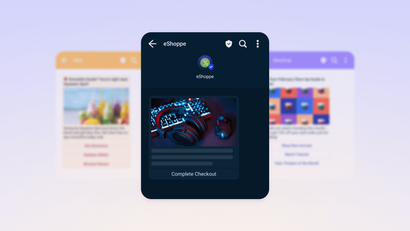Attention spans are at an all-time low. The app stores are overcrowded. And users are looking for much more than practical utility. They’re expecting consistent value, intuitive design, and personalized experiences that evolve with them, not just because their app needs to stay profitable.
If you’re a mobile marketer or developer, chances are you’re juggling performance metrics, shipping deadlines, campaign calendars, and stakeholder asks. But amid all of that, it’s far too easy to lose sight of a crucial North Star: are we truly retaining users in a way that matters?
90% of users abandon apps within 30 days of installation.
–Business of Apps
This is your retention reality check. Use the following questions as a quick diagnostic to see if your strategy is setting users up to stay, or quietly pushing them out the door.
1. Are we treating users as individuals, or just another install?
Your users expect to be seen. The days of blast campaigns and generalized journeys are over. If your messaging strategy is still built around one-size-fits-all flows, you’re alienating the very users you worked so hard to acquire.
The trap
Developers get the SDKs integrated, marketers run scheduled campaigns... but nobody's checking if the content actually matches user behavior.
The re-alignment
Marketers: Go beyond the basics of age, location, and device type. Segment mobile users based on what they do inside your app—how often they open it, what features they return to, where they drop off. For example, differentiate users who frequently explore a product category but never purchase, from those who abandoned onboarding. Tailor messages to each micro-behavior.
Developers: Ensure that behavioral events like skipping onboarding steps, repeatedly opening a specific feature, or failing to complete key flows are being tracked and passed into your mobile engagement platform. These events should power real-time user tags and journeys. Without this behavioral data, personalization stops at “Hey [First Name]”.
Personalized messaging leads to a 344% higher average engagement rate than generic messages.
2. Are our messages fostering a connection, or just delivering information?
Yes, as a business, the devil is in the data. But users don’t engage with data, they engage with emotion. Your message may be technically accurate, but if it doesn’t resonate or feel human, it won’t make a measurable impact.
The trap
Push copy that reads like a changelog: “Feature XYZ now available.” Informative? Yes. Memorable or emotionally compelling? Not so much.
The re-alignment
Marketers: Don’t just announce a feature, sell the why. It’s the difference between “Dark mode now available,” and “Give your eyes a break. Try dark mode tonight.” Test how emotional language, humor, or storytelling formats perform with different cohorts. It’s not fluff, it's how you stand out in a crowded notification tray.
Developers: Enable message variations with dynamic content fields tied to user behavior, preferences, or history (e.g., favorite product category, last session content). This gives marketers the flexibility to personalize tone and emotion at scale without asking for engineering tweaks every sprint.
3. Do we know when our users need us, or are we just hoping they’ll stick around?
Hope is not a strategy, and a purely reactive approach is a one-way ticket to user churn. The best apps anticipate drop-off moments and re-engage before the user checks out.
The trap
Retargeting lapsed users after a 7-day inactivity period. By then, the connection is already cold.
The re-alignment
Marketers: Set up retention campaigns that don’t wait for inactivity. Example: if a user attempts a workout plan but stops after day 2, trigger a motivational message on day 3, not day 14. Use behavior-based journey mapping to meet users where they are, not where you hope they’ll be.
Developers: Track user engagement at a granular level and support cohorts like “first-time converters,” “frequent returners,” and “drop-off after goal setup.” Push these into your engagement tools to allow marketers to trigger conditionally timed, hyper-relevant nudges. Integrate machine learning tools (if available) to help forecast churn likelihood.
4. If we stopped sending messages today, would our users miss them?
This is the brutal honesty check. If your users wouldn’t notice silence, then your messaging isn’t adding value.
The trap
Treating messages as a checkbox: “We send two per week.” That’s not a strategy; that’s noise.
The re-alignment
Marketers: Treat every message like a product feature. It should solve a problem, answer a question, or deliver an “aha” moment. Create a message purpose statement: This push helps users [X]. If you can't finish that sentence, don't send it. Also, test opt-in incentives and “content-based” messaging rather than transactional prompts only.
Developers: Instrument analytics to track engagement depth—open rates are only the start. Look at time-to-action, frequency of engagement post-notification, and opt-out/uninstall trends. Flag drop-offs after campaigns to help evaluate whether messaging truly resonates or just creates noise.
5. Are we building habits, or just pushing promotions?
Retention grows when users form rituals with your app. Promotions alone spike short-term metrics but don’t lead to habitual usage.
The trap
Over-relying on discounts or sales alerts to drive engagement, especially in eCommerce or fintech apps.
The re-alignment
Marketers: Identify your “core loop”—that repeatable value-driving behavior (e.g., checking daily insights, uploading content, logging tasks). Create nurture campaigns that encourage users to complete that action regularly. Think in terms of habit loops: trigger → action → reward. Incentivize consistency, not clicks.
Developers: Build support for progress tracking, habit reinforcement mechanics (like streaks or levels), and lightweight gamification. Example: a simple progress bar that fills each day a user logs in can visually reinforce momentum and return behavior.
6. Do our messages make our users’ lives easier, or just interrupt them?
Time is the most precious resource. If your notification doesn’t reduce friction or improve outcomes, it’s probably an annoyance.
The trap
Bombarding users with announcements or upsells unrelated to their current journey.
The re-alignment
Marketers: Before sending anything, ask: Does this help users do something faster, smarter, or with less friction? Messages should answer questions users didn’t even ask yet. Example: “You’re 2 clicks away from completing your first playlist. Want to finish now?” Instead of saying “New playlists available.”
Developers: Enable in-app context triggers, like messages that only show when a user pauses on a screen, enters a specific state, or completes an action. Think “smart nudges,” not “popup spam.” Also, build suppression logic to prevent overlapping or irrelevant messages.
7. Are we sending messages when it’s best for us, or when it’s best for our users?
That Monday 10am push might align with your calendar, but is that when your users are most likely to engage?
The trap
Scheduling messages during working hours for convenience, not effectiveness.
The re-alignment
Marketers: Study your engagement data to uncover hidden timing patterns. Are Gen Z users engaging later at night? Do weekday mornings outperform weekends? Start customizing delivery timing based on real engagement trends, not what fits your calendar.
Developers: Implement time zone support and user-level send-time optimization. Use OneSignal’s Intelligent Delivery or similar features to stagger sends based on predicted receptiveness. Also, expose send-time preference options in user settings for even more control.
8. Are we nurturing users toward long-term value, or just optimizing for the next session?
Chasing short-term metrics like daily active users is like celebrating applause at a dress rehearsal. It might feel good for now, but it doesn’t mean the show will succeed. Without deeper engagement and lasting value, users won’t stick around.
The trap
Structuring journeys around app opens instead of meaningful milestones (e.g., profile completion, feature mastery, social sharing).
The re-alignment
Marketers: Define and align around what true value looks like in your app. Is it a 3-month streak? A referral? A user-generated post? Then backcast… what behaviors get them there? Design onboarding flows, milestone messages, and celebration campaigns that reinforce progress, not just activity.
Developers: Build logging for deep-engagement events (not just surface-level clicks). Track long-term value signals like feature mastery, recurring engagement, or social participation. Make these milestones available for messaging tools so marketers can celebrate real user progress and investment.
From Campaign Chaos to Retention Clarity
You don’t need more tools. You need more intention.
Use these eight questions as your regular gut check. Schedule that team retro you’ve been putting off. Rethink your lifecycle map. And if the answers make you squirm? Good. That means you’re paying attention!
OneSignal is purpose-built for marketers and developers who want to move beyond basic engagement and build lasting user relationships. With powerful segmentation, real-time behavioral triggers, and an automated Journeys builder (no code required!), we make it painless to send messages that feel personal, timely, and genuinely valuable.
Ready to future-proof your retention strategy?
Get Started for Free



